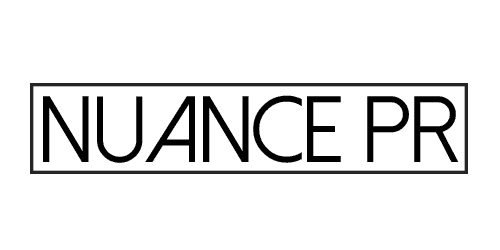
In today’s fast-evolving digital age, technological advancements and the rise of digital marketing have leveled the playing field for businesses of all sizes. Brands now have unprecedented access to wider audiences, but this accessibility also brings a fierce competitive landscape. Consumers have become increasingly discerning, demanding not just quality products and services but also strong brand authenticity, unique value propositions, and meaningful engagement.
In such an environment, a well-defined brand positioning strategy is not just an advantage—it’s a necessity. Effective brand positioning ensures that your brand doesn’t just blend into the market but stands out, securing the attention of both consumers and the media.
What Is Brand Positioning & Why Is It Crucial?
Brand positioning is the strategic process of shaping how your target audience perceives your brand in the marketplace. It is the foundation upon which all your marketing efforts are built. A strong positioning strategy instills a compelling and lasting impression in the minds of your ideal customers, making your brand the obvious choice over competitors.
By clearly defining your brand’s unique attributes, you give customers a reason to choose your product or service over the alternatives. This not only fosters brand loyalty but also helps you gain credibility, maintain competitive advantage, and drive long-term growth.
How to Refine and Strengthen Your Brand Positioning Strategy
Brand positioning isn’t something you set and forget—it requires continuous assessment and refinement. Here’s a structured approach to building and enhancing your brand positioning in today’s competitive market.
1. Start with a Brand Positioning Audit
Before you refine your brand’s positioning, it’s essential to assess where your brand currently stands. This involves evaluating both internal brand attributes and external market perceptions.
Begin by reviewing these foundational elements:
✅ Mission Statement – What is your brand’s purpose? Why do you exist?
✅ Core Values – What principles guide your brand’s decisions, messaging, and culture?
✅ Value Proposition – What unique benefit does your brand offer to customers?
✅ Brand Persona – What personality traits define your brand’s communication style and image?
Revisiting these elements ensures that your positioning strategy remains aligned with your brand’s essence and remains relevant to your target audience.
2. Reevaluate Your Target Audience
Consumer behaviors evolve over time. Is your initial target audience still your most valuable market segment? To ensure your brand stays relevant, revisit your audience profile by analyzing:
📍 Demographics – Age, gender, income level, education, location
📍 Psychographics – Lifestyle, interests, values, pain points
📍 Behavioral Trends – Purchasing habits, social media engagement, brand interactions
One way to gain deeper insights is by analyzing your most engaged followers on social media. Which product benefits resonate most with them? Is it pricing, functionality, authenticity, or emotional connection? Understanding this helps refine your marketing messaging to align with what matters most to your audience.
3. Analyze the Competitive Landscape
Your competitors offer valuable insights that can help shape your brand positioning. Conduct a thorough analysis of their:
🔍 Brand positioning and messaging
🔍 Product offerings
🔍 Website functionality and UX
🔍 Marketing tactics and advertising approach
🔍 Customer engagement and sentiment analysis
Ask yourself:
💡 What do competitors do exceptionally well?
💡 Where do they fall short?
💡 How does your brand outperform them?
Identifying your brand’s key differentiating factor ensures that your positioning remains distinct and compelling.
4. Craft a New Brand Positioning Statement
A brand positioning statement serves as an internal guide, aligning your team’s efforts across marketing, sales, and product development. Unlike slogans or taglines (which are meant for public consumption), a positioning statement is a strategic tool designed for internal clarity.
To create a compelling brand positioning statement, include:
📌 Target Audience – Who are you speaking to?
📌 Market Definition – What category does your brand fall under?
📌 Differentiating Factor – What sets you apart from competitors?
📌 Reason to Believe – Why should customers trust your brand?
Here’s a simple example:
📝 For ambitious professionals who want to elevate their personal brand (target audience), Elevate Consulting (market definition) provides cutting-edge personal branding strategies (differentiating factor) backed by years of industry expertise and proven success (reason to believe).
This statement provides clarity and direction for all future branding and marketing efforts.
5. Align Your Brand Positioning with Business Goals
Brand positioning isn’t just a marketing exercise—it should align with your overall business objectives. This means ensuring that your strategy supports measurable goals that drive growth and success.
Set S.M.A.R.T. goals (Specific, Measurable, Attainable, Relevant, Time-bound) that reinforce your brand’s positioning while guiding marketing strategies. For instance:
✅ Increase brand awareness by 20% within six months through targeted digital campaigns.
✅ Improve customer loyalty by 15% over the next year by enhancing brand storytelling and engagement.
✅ Boost conversion rates by refining product messaging based on audience feedback.
Your brand positioning should be seamlessly integrated into your marketing, sales, and operational strategies to create a cohesive brand experience.
6. Leverage Social Proof to Strengthen Positioning
Once your new brand positioning is in place, reinforce it by showcasing customer testimonials, reviews, and case studies. Consumers trust peer recommendations more than brand messaging, making social proof a powerful tool in solidifying your market position.
⭐ Encourage satisfied customers to leave reviews on Google, Yelp, and social media.
⭐ Highlight customer success stories and case studies in your marketing materials.
⭐ Leverage influencer and UGC (user-generated content) campaigns for authenticity.
The more evidence you provide that your brand delivers on its promises, the stronger your positioning becomes.
Final Thoughts: Make Brand Positioning a Continuous Effort
Brand positioning isn’t a one-time task—it’s an ongoing process. As markets evolve, consumer expectations shift, and new competitors emerge, it’s essential to continually assess and refine your strategy. Regularly revisit your positioning statement, analyze market trends, and listen to customer feedback to ensure your brand remains relevant, competitive, and impactful.
By following these steps, your brand will carve out its own space in the market, fostering deeper connections with customers and setting the stage for sustained success. 🚀
NuancePR’s: White Hat Link Building Service
The Secret Weapon for Sustainable SEO Success White hat link building services and search engine optimization (SEO) has evolved into…
Crisis Averted: How PR Pros Can Prevent Brand Catastrophes Before They Happen
In public relations, the best crisis is the one that never makes the news. We’ve all seen brands—once thriving and…
Press Kits 101:
The Secret Weapon for Brand Storytelling No matter what you call it—a press kit, media kit, digital press kit, electronic…
PR Stunts: How to Capture Attention and Stay true to Your Brand
Public Relations (PR) stunts have taken center stage in recent years, from IHOP’s headline-grabbing name change to IHOB to Elon…
AI: The Ultimate Enhancement
Not a Replacement! for Humans in Sales and Customer Service Artificial Intelligence (AI) is often painted in two extremes—either as…




